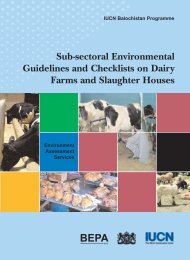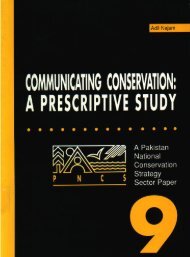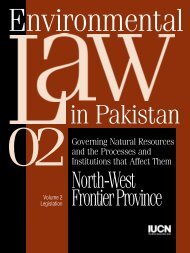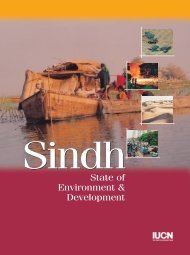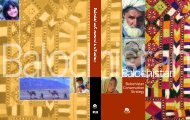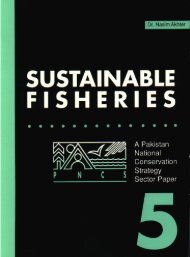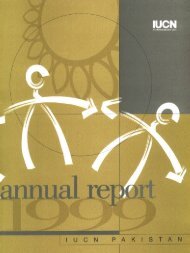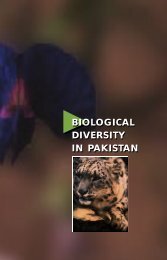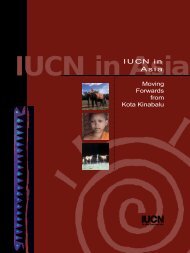Nigel JR Allan - IUCN - Pakistan
Nigel JR Allan - IUCN - Pakistan
Nigel JR Allan - IUCN - Pakistan
Create successful ePaper yourself
Turn your PDF publications into a flip-book with our unique Google optimized e-Paper software.
10<br />
gust Francke who produced more than seventy publications about the region.<br />
He wrote about Tibetan petroglyphs found on the Darkot Pass off to<br />
the west of the Karakorum and of the Christian Nestorian petroglyphs<br />
found in Tangtse far off to east, all of which lend an air of the historical<br />
ecumenical diversity of the Karakorum region. Karl Jettmar has added<br />
considerably to our knowledge of the travelers from the past who have<br />
criss-crossed the Karakorum.<br />
John Bray has also dealt with the role of the Moravian mission in<br />
Ladakh. Lest anyone think that their activities were only confined to religion,<br />
it was the Moravian missionaries who recorded daily meteorological<br />
measurements atop the mud brick tower built well over a century ago<br />
by the Survey of India, which lies in ruins today down an alley opposite<br />
the entrance to the Moravian Mission school in Leh. These records were<br />
used by Ellsworth Huntington to buttress his arguments set forth in The<br />
Pulse of Asia. Huntington’s environmental determinism was meant to be<br />
an antidote to Darwinism but eventually fell out of favor in the 1920s;<br />
strangely, it rears its ugly head whenever authors write about mountain<br />
people in the geoecology paradigm.<br />
I have refrained from becoming immersed in the conflict over Kashmir.<br />
Among the vast amount of literature on this topic are the listings in<br />
Warikoo’s bibliography on Kashmir. Garry Alder and Alastair Lamb provide<br />
exceptionally sound commentaries on this topic. Wirsing (1993) analyzes<br />
the Siachen glacier situation.<br />
In summary, this sourcebook has a two-fold purpose. One obvious<br />
objective is to highlight the role of protected areas in and around the<br />
Karakorum Himalaya. But it should also bring to the reader’s attention<br />
the rich literature that exists on the Karakorum Himalaya and the adjacent<br />
territory. By today’s standards the lay person might regard the residents<br />
as remote and isolated but these descriptors mask the vital role that these<br />
people played in centuries past. This place was indeed the “Crossroads of<br />
Asia” and the local people had a vital role in this transcontinental highway.<br />
Finally, it is to be hoped that this sourcebook for a Karakorum protected<br />
area will provide some assistance to the sojourner in the Karakorum<br />
Himalaya who values and enjoys this unique and treasured place.




